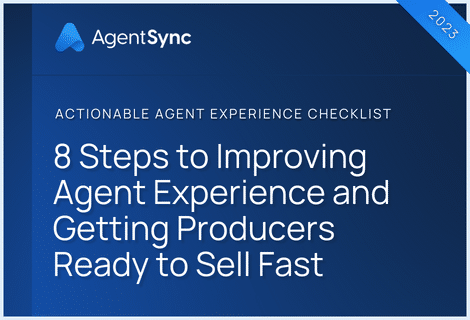

Insurance carriers, agencies, brokerages, MGAs, and MGUs all struggle to walk the compliance tightrope, balancing these three key points:
- Compliance isn’t optional, but to do it right you need significant dedicated resources on staff – whether that’s headcount, staff time, or technological systems
- To do it quickly is nearly impossible
- To do it at scale without an exponential increase in your compliance staff (and payroll costs) is challenging
The costs may come in the form of additional people dedicated solely to compliance at larger organizations, inefficiencies, and wasted manual effort on an already-overworked staff at smaller organizations; and the cost of maintaining and working with legacy systems that aren’t pulling their weight across the board.
Whether the economy is up or down, whether it’s booming or a recession is looming, most organizations want to cut costs – or at least not pay more than they have to for things. You also want to stay on the right side of all applicable laws and regulations, but you can’t just remove compliance from your operations or cut back on it as a function. So the question becomes, how do you do more with less?
The answer is to automate compliance in such a way that your in-house experts are freed up to do meaningful work they want to be doing while the nitty-gritty tasks of keeping up with ever-changing regulations are baked into your workflows.
Why is insurance compliance expensive?
Insurance businesses face a large compliance burden. Just a few examples include:
For carriers:
- Every downstream agency and individual producer or agent has to be properly licensed in their resident state and nonresident states for each line of business – and states differ in whether they require licensure at the agency level, the agent level, or both.
- Every downstream agency and/or individual producer or agent has to be appointed with each carriers whose products they sell – again, with rules varying by state as to who needs to hold the appointment.
- Licenses and appointments have to be valid not just at the time a producer makes a sale, but at other points in the process, such as when a carrier pays out commissions.
For agencies:
- Producers care about the speed and ease of their onboarding experience. If you require them to jump through too many hoops, including repeatedly entering the same information in multiple systems, you might lose them before they’re even ready to sell.
- The same goes for your internal staff. No one wants a job as an insurance agency compliance manager that is 90 percent data entry and cross-referencing state websites with internal spreadsheets.
- Your carrier partners depend on your producer compliance being buttoned up. Not having it properly managed can damage your reputation with the carriers you want to do business with.
For MGAs, some or all of the same issues apply depending on how many of the traditional carrier responsibilities the organization takes on.
To get back to answering the question of why insurance compliance is so expensive, consider the number of producers, agents, and dually licensed broker-dealers that exist in your organization’s distribution channel. To track the status of each one’s licenses and appointments is a time-consuming and manual process.
It’s not uncommon for carriers, agencies, and MGAs to still rely on their compliance teams to aggregate spreadsheets, static PDF documents, and various state websites to monitor compliance. When you multiply this complexity by the number of distribution channel partners you work with, all the way down to the individual producer level, there’s nothing quick, easy, or low-cost about it!
Without the most modern technology to do the heavy lifting for you, someone at your organization has to understand the nuances of insurance regulations across states and lines of authority, then keep up with ever-changing regulatory requirements. This role requires significant tenure and expertise within your team and has typically meant the need for dedicated, specialized staff to serve this purpose alone.
Finding and keeping dedicated compliance staff becomes a challenge in an industry already facing a talent shortage and a mass retirement wave. Attracting and retaining people whose main purpose is to cross-reference spreadsheets, PDFs, and state departments of insurance websites is a losing proposition.
Even if finding people to do the job isn’t your issue, if you’ve got people doing the labor-intensive work of manually tracking producer compliance; that’s headcount on your payroll who aren’t generating revenue. They’re not even doing revenue-supporting work like customer service.
The work they do is extremely important and legally required. But they’re spending entirely too much time on compliance monitoring, compliance management, and license verification – all of which could be automated with better results for everyone.
How much is manual compliance management costing you?
Probably more than you realize. You have to consider costs both in terms of dollars and cents, and in other less tangible ways, like wasted time, regulatory risks, and staff attrition.
The cost of wasted human time and effort
How many humans does your business need to manage your producer licensing and compliance? For each of those administrative employees, you’ve got to pay for salary, benefits, taxes, (potentially) office space, equipment, and many other hard costs.
If it’s not entire positions dedicated to manually managing compliance, you might have members of your legal, compliance, operations, or other teams who could be doing more valuable work if they weren’t spending a significant portion of their time on compliance-related tasks. Regardless of whether it’s entire roles dedicated to something they don’t have to be, or people spending what should be valuable revenue-generating time on administrative tasks, wasted human effort is a huge compliance cost.
And for all that cost, what you get in return are people doing things that could be automated and done in way less time. Think about what those people could be doing with that time, or possibly their entire role, to serve customers, build customer relationships, expand your services into new markets, and much more. If only they weren’t dedicated full-time to manually tracking producer compliance.
The cost of recruiting and retaining employees
Employees these days have more choice over where and how they work than ever before. If your organization isn’t putting systems in place that make your employees’ jobs easier, less tedious, and more efficient, then you’re going to lose out on the best talent to companies that are.
The cost of replacing an employee is estimated to be anywhere from $1,500 on the low end for an hourly employee to over 200 percent of their salary for C-level executives. When your company doesn’t implement modern technology to make your employee experience truly exceptional, you risk losing everyone from the operations staff, compliance managers, and claims representatives working in-house all the way to up- and downstream partners who may find your processes too time-consuming to deal with.
No one likes repetitive tasks with a high probability for errors. But, if everyone in your organization is subject to old-fashioned processes that reinforce information silos, multiple and conflicting sources of information, and mind-numbing repetition, the odds of attracting and retaining the best talent are slim.
The cost of stagnant growth
Your growth goals might include increasing your producer force or partnering with new agencies, carriers, or MGAs to ramp up sales of a particular product or expanding into a specific geographic region. You might be looking to introduce brand new products into your current markets that require existing producers to get licensed in an additional line of authority. Or maybe you want to work with new carriers and your entire producer force needs to get appointed. (Or maybe you’re in one of those states that doesn’t require appointments – but who can even keep track of it all?)
These are great strategies for growth, but how many more compliance staff members, or hours spent on compliance tasks, will you need to do this without risking landing in regulatory hot water? And how much will that cost? With the cost of labor still high, the cost of claims ever climbing, and a question mark over your revenue for the foreseeable future, you might run into a growth roadblock if you can’t scale because you can’t invest in enough compliance resources to support these goals.
The cost of risk
Managing producer licensing and compliance on paper, with spreadsheets, or by any other manual and human-based method is full of risks. But even having a technology solution in place doesn’t mean the risk is gone. Some insurance businesses have producer compliance management software that only gets updated data from the industry’s source of truth monthly (or even less often!). Some companies manage compliance with technology that doesn’t integrate with other systems, leaving staff to re-key data from one place to another. These methods are a breeding ground for human error.
And, the more complex your compliance picture, the more risk is involved. What seems reasonable for a relatively small, regional insurance carrier or a two-person independent agency, quickly becomes a minefield of risks if the organizations start to grow, add new lines of business, or expand their geography.
If you don’t go into these types of expansions with compliance at the forefront of your mind, you could end up in a regulatory quagmire when you start to grow. Or, if your organization is already large, you could be deep in compliance quicksand already.
When you consider the risks of doing things the way you’ve always done them, consider each of these elements:
Compliance risks: What are the chances that a producer has a license that’s expired in one of the states they’re currently selling in? Do you know with 100 percent certainty that every producer in your distribution channel has a valid license and appointment both when they sell and when you pay out commissions?
Security risk: How secure is your and your customers’ information? Are you storing personal identifiable information or protected health information? What types of information security protocols are in place? Have you invested in best-in-class information security measures and training for all staff? What are the chances someone has access to information they shouldn’t have, or that secure information is being kept in unencrypted documents – or even on someone’s desk?
Reputation risk: What would it cost to repair your reputation if your organization made headlines because of a compliance misstep or security breach? Have you considered the financial ramifications of not only immediate legal defense, but public relations work and lost business from customers or investors who decide to leave after a public incident?
The cost of lost distribution channels
On top of being unattractive to internal talent, manual compliance management can make an insurance business unappealing to the up- and downstream distribution partners you count on to power your revenue. If doing business with you is more trouble than it’s worth, the carriers, agencies, and MGAs/MGUs you’d like to be partnering with have plenty of other options.
Each of these risks comes with real financial costs, and they aren’t ones you want to leave to chance.
How much does compliance automation cost?
To answer this question, you’ll have to look at your current costs versus the cost of implementing an automated producer compliance management solution. We predict, when you look at the full picture, that the cost of the right solution will be less than continuing to do things the way you’ve always done them.
While you’ll have to pay for a solution, to be sure, the savings you’ll get back when you let your staff devote time to work that generates revenue or directly impacts customers (not tedious tasks they’d rather not be doing) will pay dividends.
We can’t tell you exactly what your ROI, or the resulting true cost of automating compliance for your carrier will be (unless you speak with one of our team members about your specific situation!). But here are a few hypotheticals to consider. If your organization is in a similar situation to any of these, you can do some ballpark math to calculate your ROI.
- You have a team of three who spend an average of six hours each, daily, on administrative work related to verifying producer license and appointment statuses. What’s the cost of these hours, and what could staff be doing with those hours to further your business goals instead?
- Your company, or a downstream partner, just onboarded five new, highly promising producers who came from other agencies with proven track records. The agency’s recruiting team spent months trying to entice them away from their prior agency and finally convinced them to join up. Unfortunately, due to the manual nature of getting them appointed, verifying their license status in different states, and all the other onboarding steps, it’s been four weeks (and counting) and these producers still aren’t out there selling. This experience is all too common, and leads to producers abandoning the onboarding process, or even just starting off a new role with a sour taste.
- You have two tenured employees managing producer licensing and compliance manually by cross-referencing spreadsheets and various state DOI websites. One of the employees is close to retirement, and finding someone to fill the position is going to be nearly impossible with the current state of insurance talent. In the meantime, the non-retiring employee can’t possibly double their workload. Would the cost of automating the bulk of manual compliance tasks be worth it to relieve someone of tedium so they can focus on the work that only they can do, without the cost (in both time and money) of finding and training a replacement for the retiree?
“Reviewing and approving agent contracts in AgentSync takes me a third of the time it would to do the same tasks in another system.”
Jay Moyer, VP – Director of Marketing at GPM Life
The cost-savings of real-time automated insurance regulatory compliance
We don’t know what the future holds in terms of the world economy, but we know insurance will always be vital to making it run.
As you navigate ongoing economic uncertainty, faced with the constraints of tightening budgets, less headcount, and ever-growing revenue goals, you may want to look at the cost-saving benefits of real-time, automated producer compliance solutions.
If you aren’t using technology to support your team’s efforts, you’re wasting time and money investing in manual compliance management. Instead, focus on integrated solutions that automatically update regulatory requirements and plug in accurate producer compliance throughout all of your business workflows.
Ready to see how much money your organization could save by automating compliance and letting your humans do more valuable work? Speak with one of our experts about the particulars of your situation and learn how AgentSync can help.

